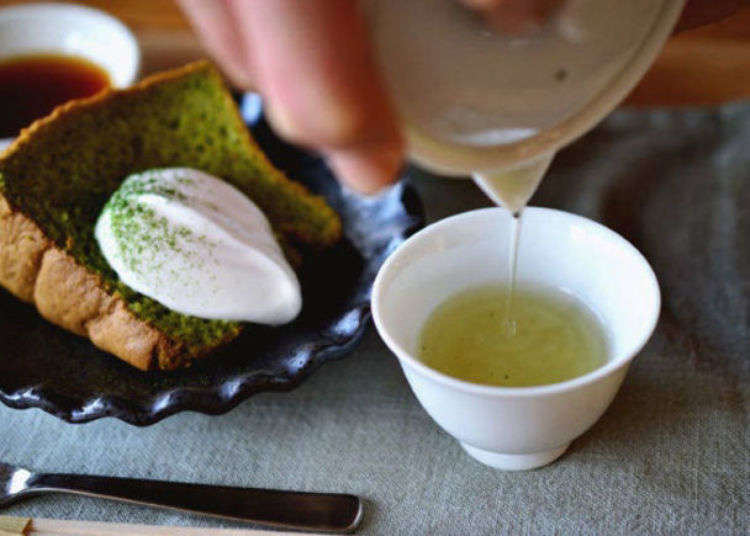
Gunze, one of Japan's leading textile manufacturers, was founded in Ayabe, a city in the middle of Kyoto Prefecture, in 1896. Ayabe Gunze Square is the perfect spot to take a break, with a museum about the history of Gunze, souvenir shops with specialty products, and a cafe where you can try Ayabe tea.
Here we’ll introduce this charming place—the perfect spot to stop by during a drive around the prefecture!
Ayabe City Tourist Spot: About 80 min from Kyoto City
Amanohashidate and Ine-no-funaya are tourist spots in the Kyotango area, the northern part of Kyoto. Since the opening of Kyoto-Jukando Road in 2015, many tourists are now able to visit due to ease of access. It takes about 80 minutes from Kyoto City to Kyotango by car. Among the idyllic countryscape spread throughout the town of Ayabe is the Ayabe Gunze Square.
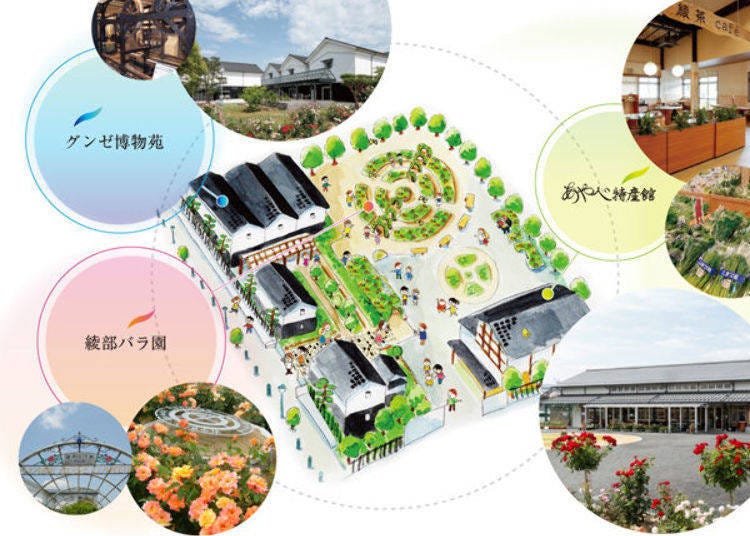
Ayabe City is known as the place where Gunze Limited, famous for their undergarments and stockings, was founded. There are establishments such as cafes and souvenir shops in Ayabe Gunze Square, and the Gunze Museum, which was renewed in commemoration of the 120th anniversary of Gunze's foundation.
And now, let's take a look at all the establishments!
A taste of Gyokuro and matcha sweets at Ayabe Cafe
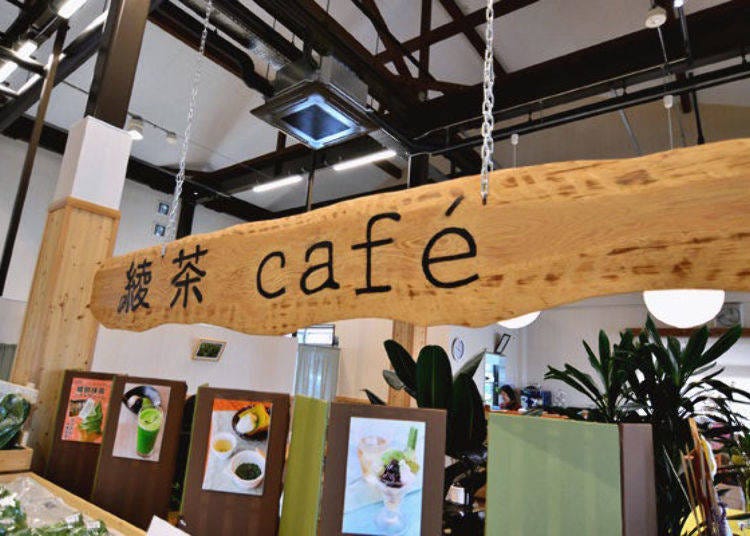
Surrounded by mountains, the town of Ayabe is known for its temperature difference between morning and evening. It is also known for its tea. Ayabe tea is gaining recognition nationwide and has even continuously won awards for local production at the National Tea Competition.
At this Ayacha Cafe, you can have a taste of such prize-winning tea. It is located in the building 'Ayabe Tokubetsu-kan' in Gunze Square.
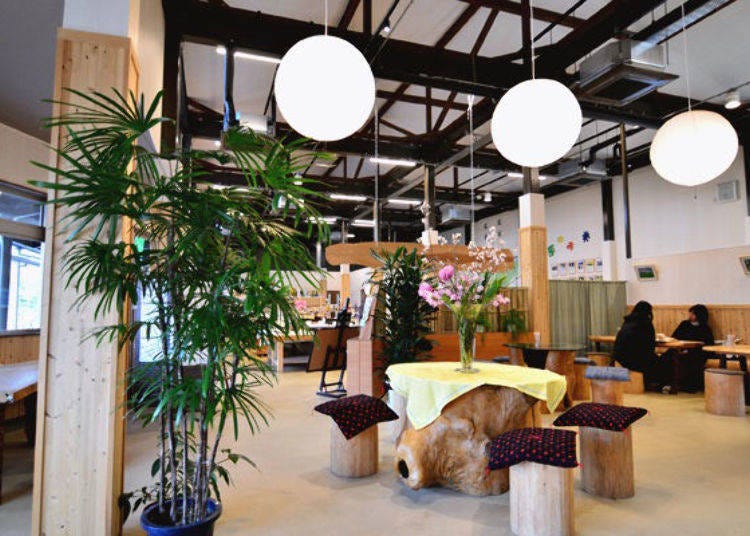

There are various menu items, such as Ayabe sencha and matcha, as well as sweets made from those teas. The most popular item is the Gyokuro Set (¥800, tax included). You can taste the delicious chiffon cake, rich in the luxurious taste of Ayabe's gyokuro and matcha teas.
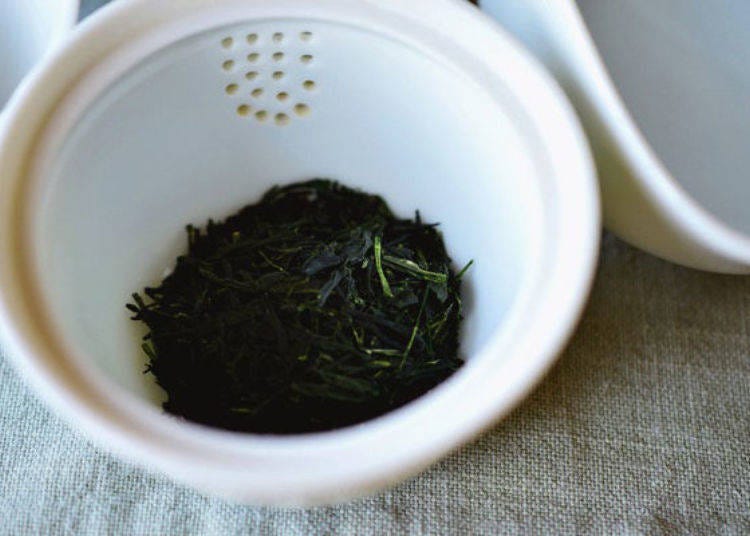
There are many green gyokuro tea leaves inside the teapot. Gyokuro is a type of green tea, but it is grown differently. By covering the leaves with black cloth for about three weeks during cultivation and blocking out the sunlight, the bitterness is suppressed, and flavor, sweetness, and scent are all drawn out.
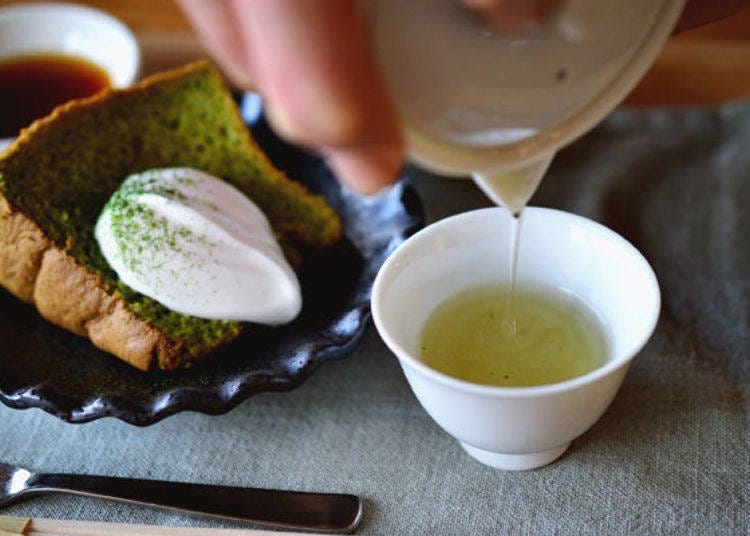
After the water has been boiled and cooled to the appropriate temperature (around 60 degrees), pour carefully into the teapot. Place the lid and let it steep for about 1~2 minutes to draw out the flavor. The taste remains until the very end, so when pouring it into your teacup, make sure to get out every last drop.
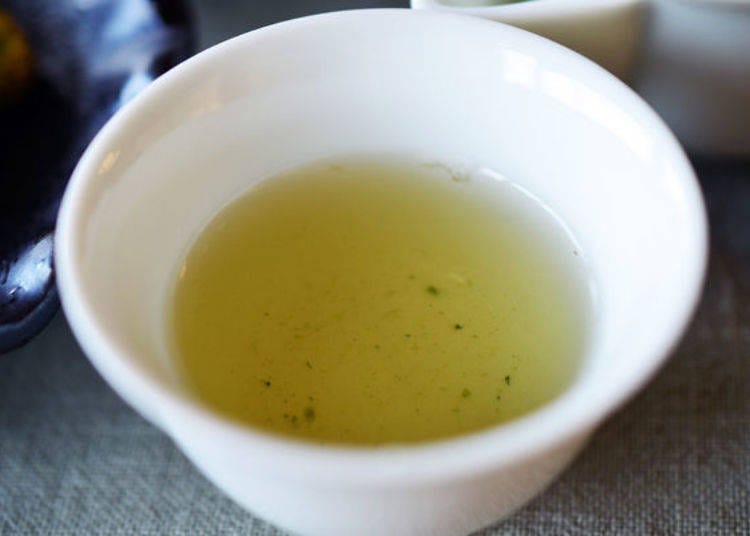
After the water has been boiled and cooled to the appropriate temperature (around 60 degrees), pour carefully into the teapot. Place the lid and let it steep for about 1~2 minutes to draw out the flavor. The taste remains until the very end, so when pouring it into your teacup, make sure to get out every last drop.
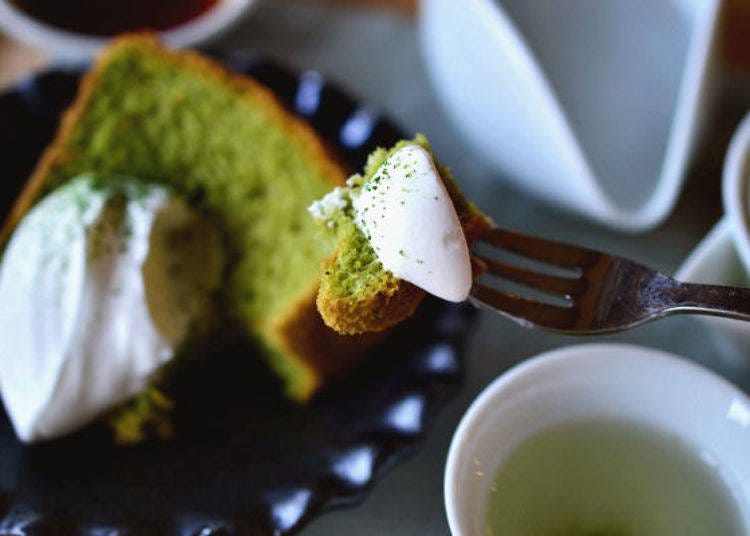
The matcha and rice flour chiffon cake pairs well with this luxurious gyokuro tea. The tea's refreshing bitterness and the natural sweetness of the rice flour make the perfect combination.
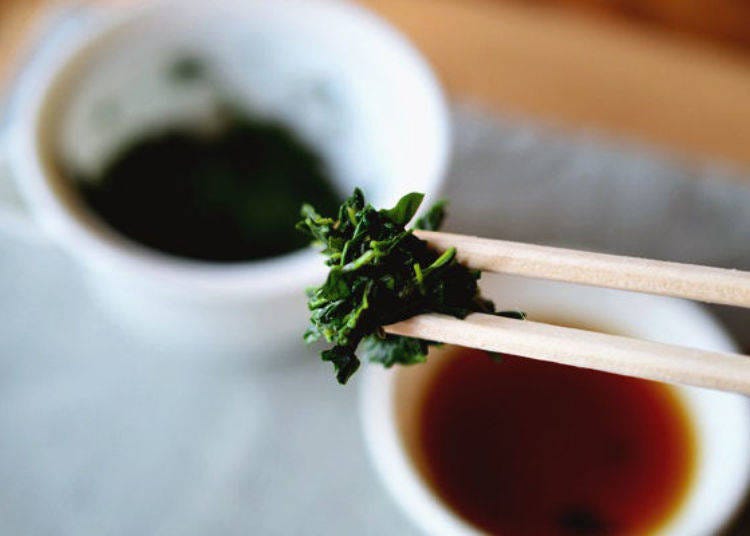
After you finish drinking the tea, you can even eat the gyokuro leaves. As mentioned before, they are grown without being directly hit by the sun, and do not stiffen. The slightly bitter taste and crispy texture also tastes good with ponzu. It seems to be eaten by the locals in tsukudani, a simmered dish.
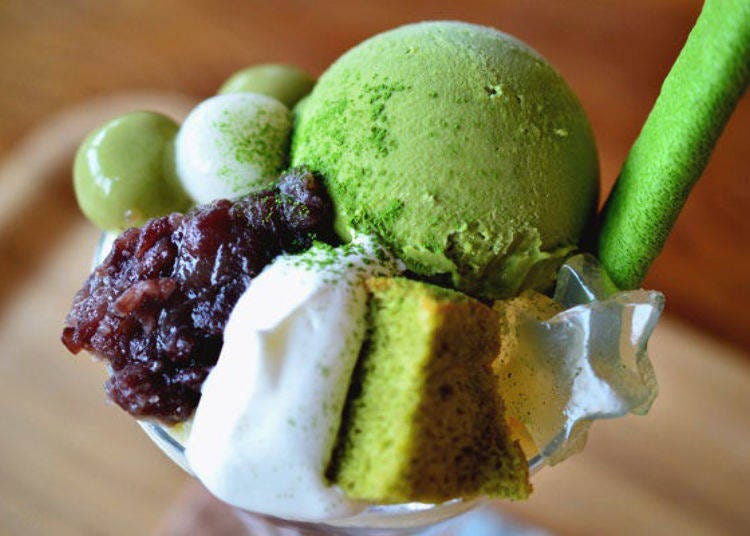
The matcha ice cream with matcha cake and matcha flour dumplings in this spacious cafe is just what you need after a long drive. You may want to plan a slightly longer break time when visiting.
-
Ayacha Cafe綾茶cafe
- Address 1-2 Kamenashi, Aono-cho, Ayabe-shi, Kyoto-fu
- Phone Number 0773-43-0835
Hours: 9AM~5PM
Holidays: Tuesdays (in case of national holidays, following day will be closed)
Experience 120 Years of History at the Gunze Museum
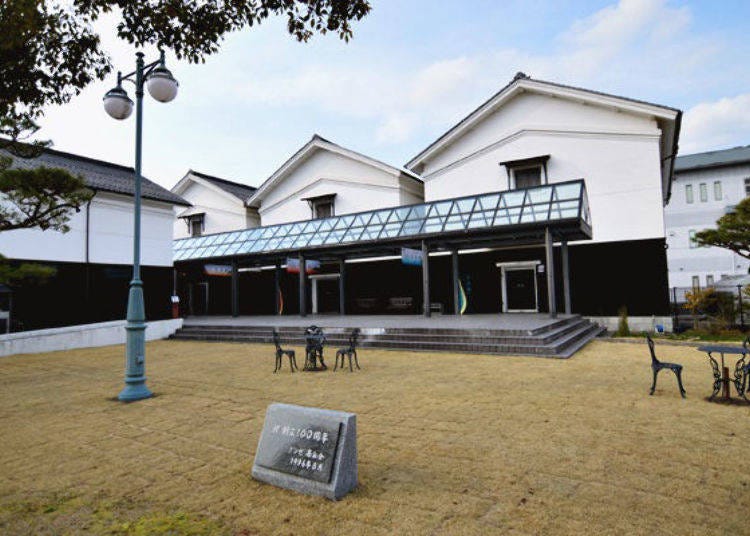
Next is the Gunze Museum, renewed in November of 2016 to mark the 120th anniversary of its foundation. Valuable items are on display for each of its three themes, "Sogyogura," "Gendaigura," and "Miraigura" (respectively "Establishment," "Present," and "Future" of Gunze).
Sericulture has been popular since ancient times, and Gunze was born as a company run through the silkworm business. At that time, the company was called "Ikarugagun," and to promote the silkworm industry to develop the city further, it became known as "Gunze."

In Sogyogura, you can see exhibits of the machines used in the silk industry as well as the progress made since the time of establishment.
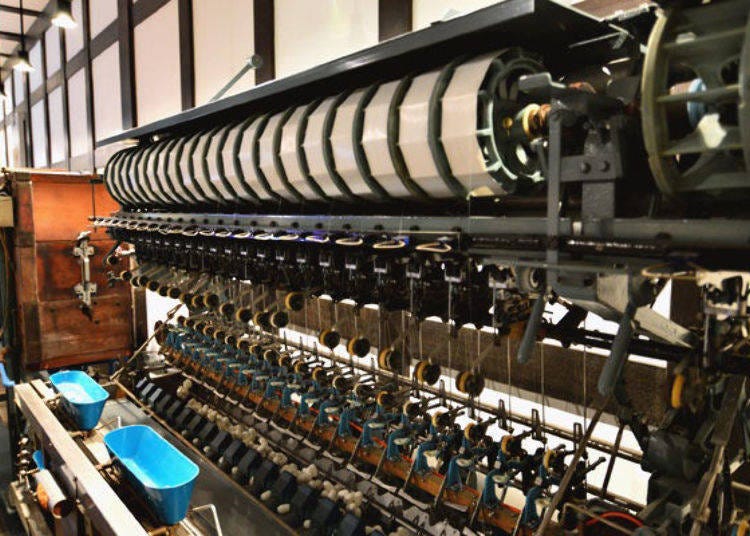


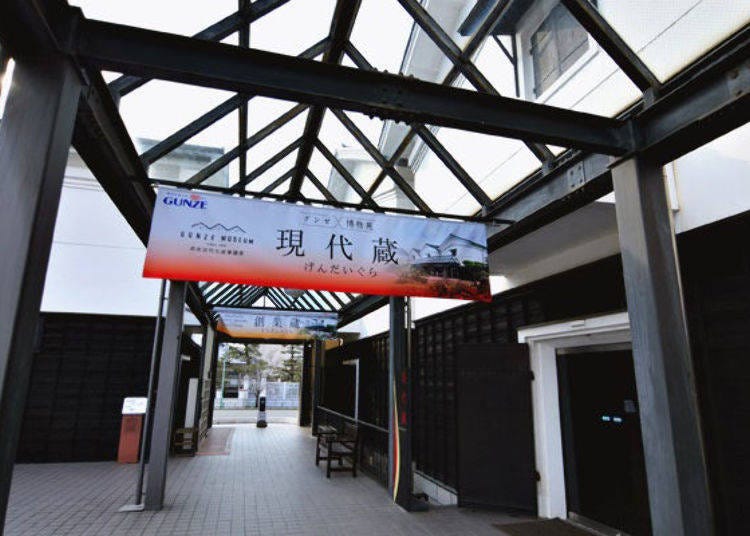
Next is 'Gendaigura,' or the modern-day warehouse. There are displays of products developed in the textile industry utilizing the expertise cultivated from the silkworm industry, such as the apparel business's main undergarment products.
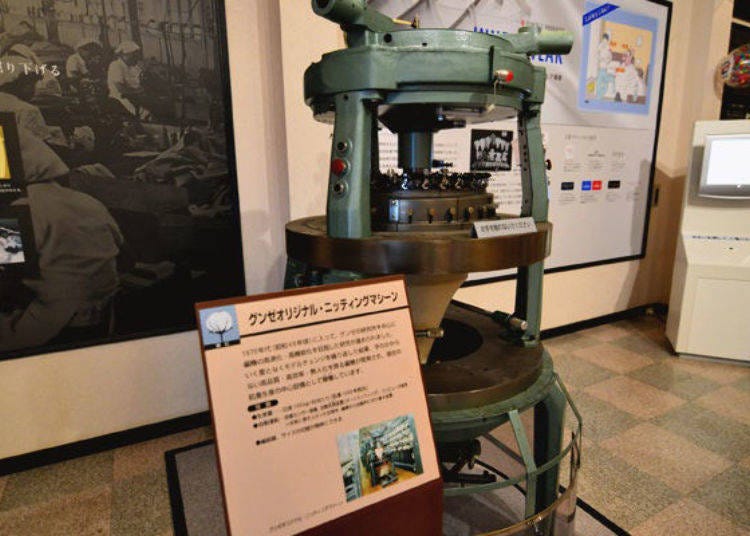
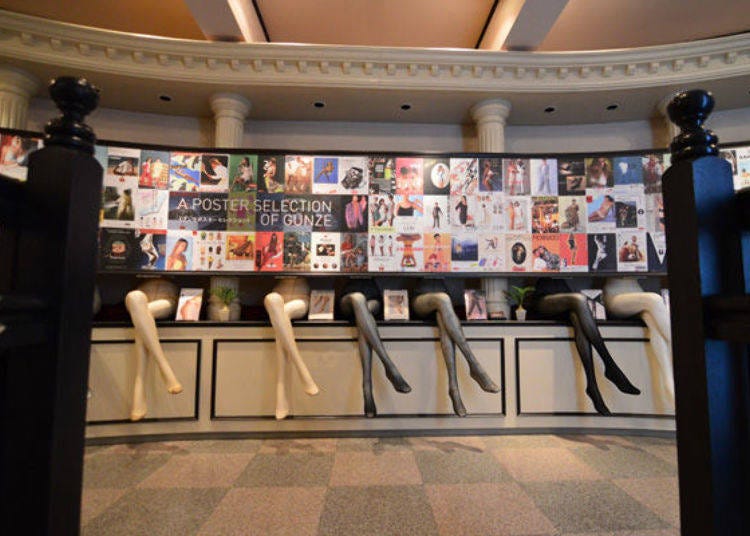
The second-floor exhibit shows the development of the main products, stockings, and undergarments. From their familiar, modern-day items to items on the more retro side, there are a variety of products displayed.
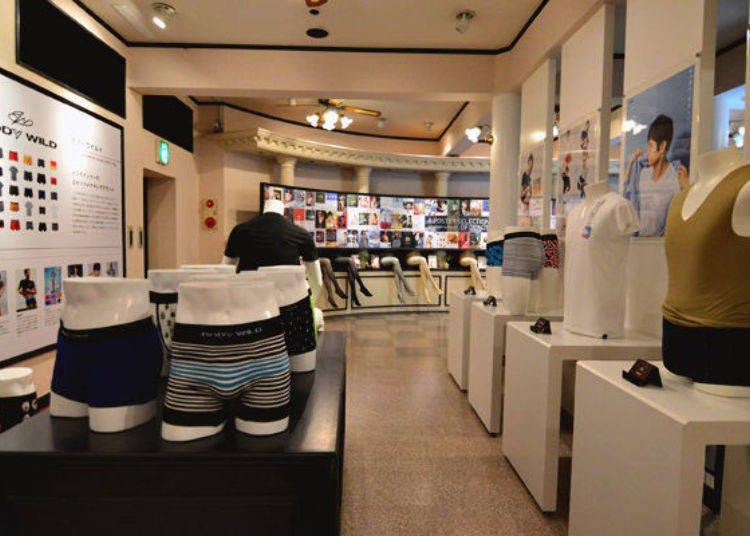
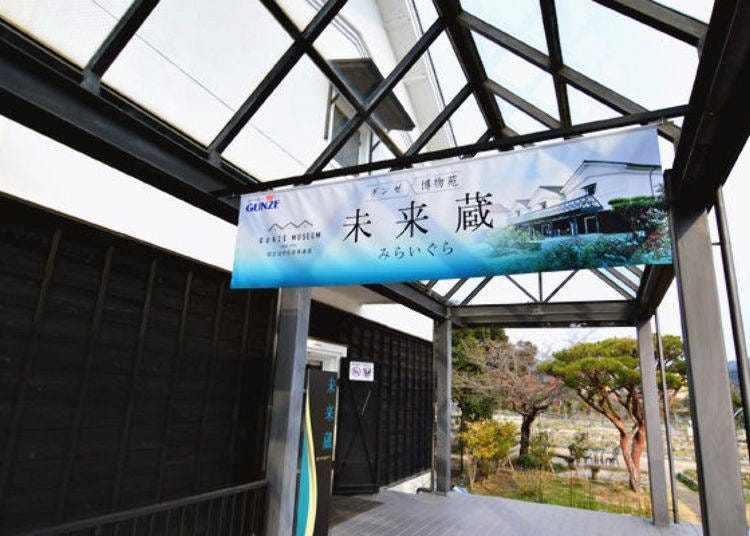
Last is the "Miraigura," or future warehouse. Here they introduce Gunze's future items, such as their latest products and technologies.
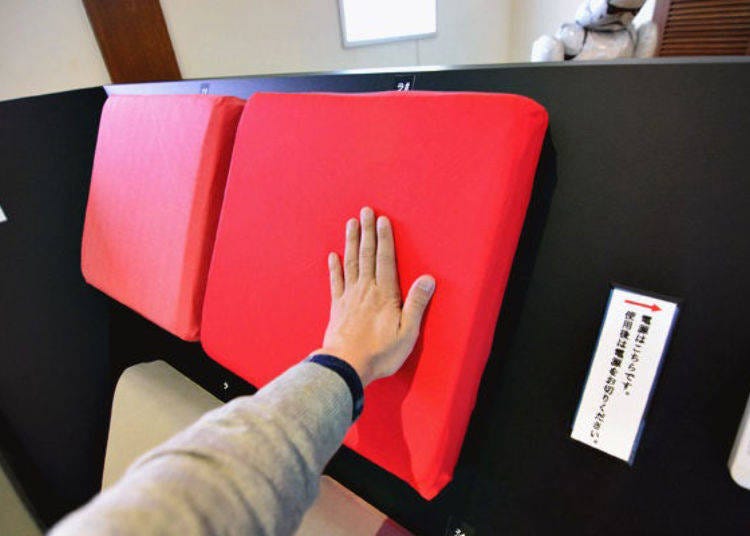

"Conductive Knit Materials" in which conductive fibers are kitted, such as thin metal wires and metal-plated thread, are flexible, stretchy, and easy to carry, and therefore likely to be used in various products in the future.
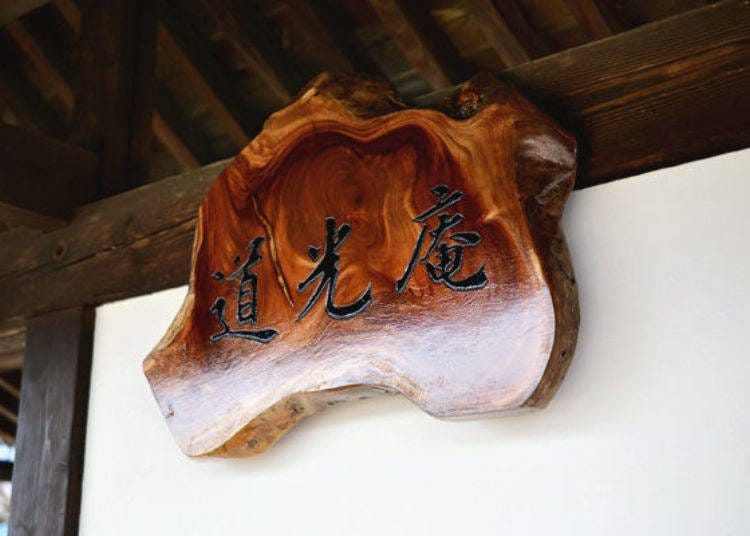
When the exhibition tour was over, I took a rest at Dokoan, across from the Ayabe Tokubetsukan. Part of the house in which the founder Hatano Tsurukichi lived has been reconstructed into a rest area. There is also a coffee vending machine. With coffee for ¥100 per cup, it's a great place to relax.
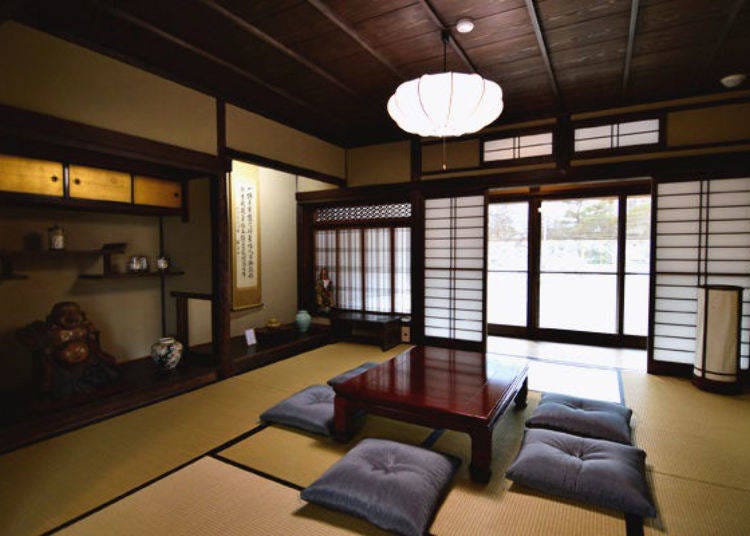
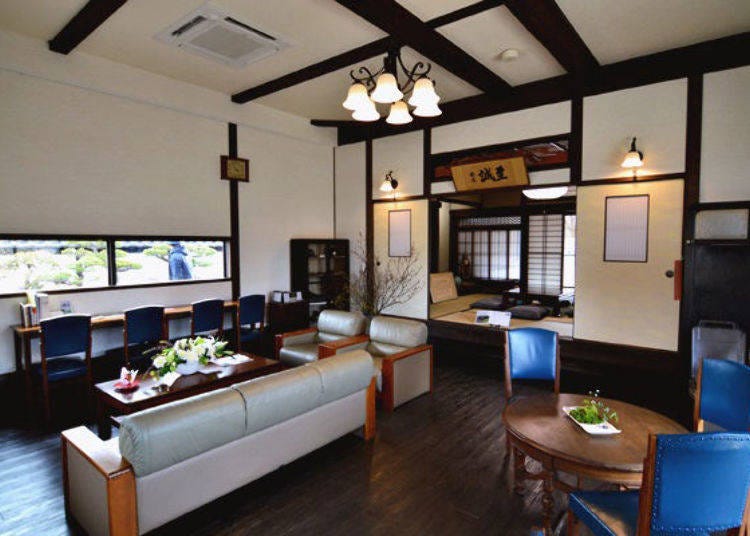
-
Gunze Museumグンゼ博物苑
- Address Ayabe Gunze Square, Aono-cho, Ayabe-shi, Kyoto-fu
- Phone Number 0773-42-3181
Hours: Exhibition Collection (Sogyogura, Gendaigura, Miraigura) 10AM~4PM
Dokoan 11AM~4PM *Thurs, Fri, Sat only
Closed: Tuesdays (in case of national holidays, following day will be closed)
Monday~Friday
0773-42-3181 (Gunze Limited Human Resources General Affairs)
Sat, Sun, Holidays: 0773-43-1050 (Gunze Museum)
Ayabe Tokubetsukan: Get Your Ayabe Souvenirs Here!
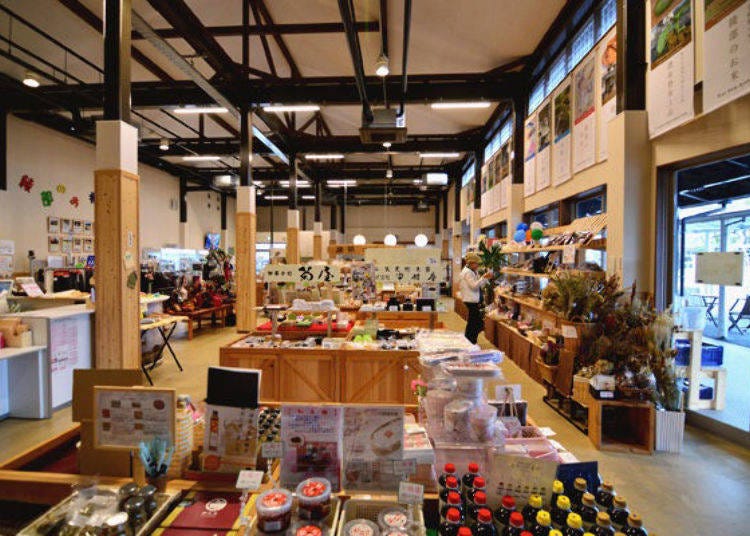
Lastly, let's take a look at the Ayabe Tokubutsukan, or "specialty museum." Here you can buy all kinds of specialty Ayabe products such as locally grown vegetables, agricultural processed goods, local wine and rice, and sweets. It seems to be a popular shopping spot with locals as well as tourists.
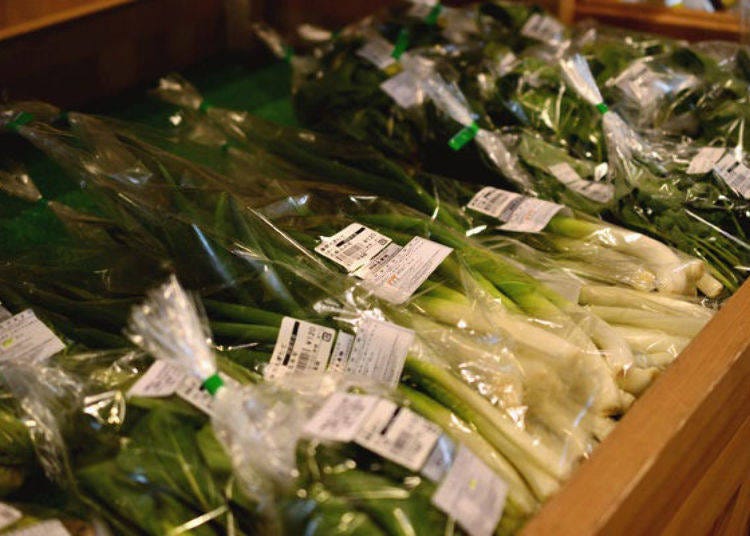
3 Director-Recommended Ayabe Souvenirs
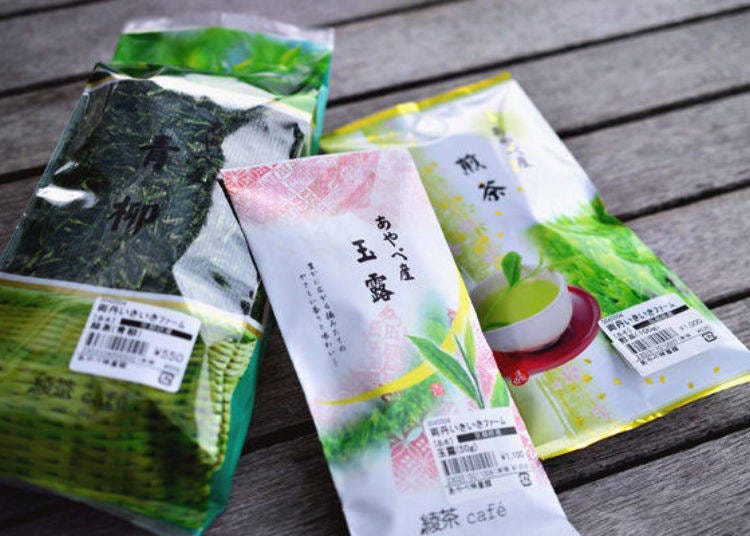
Out of the many available souvenirs, the ones shown here are recommendations by the Tokubutsukan Director, Mr. Otsuki.
First is the Ayabe tea, as introduced earlier. It is the same tea that is served at Ayacha Cafe. It seems many people come here to buy it after trying it in the cafe.
Gyokuro (50g, ¥1,100), Matcha (100g, ¥1,000), Green Tea (Aoyagi/300g, ¥550) seem to be the popular choices. *Prices include tax.
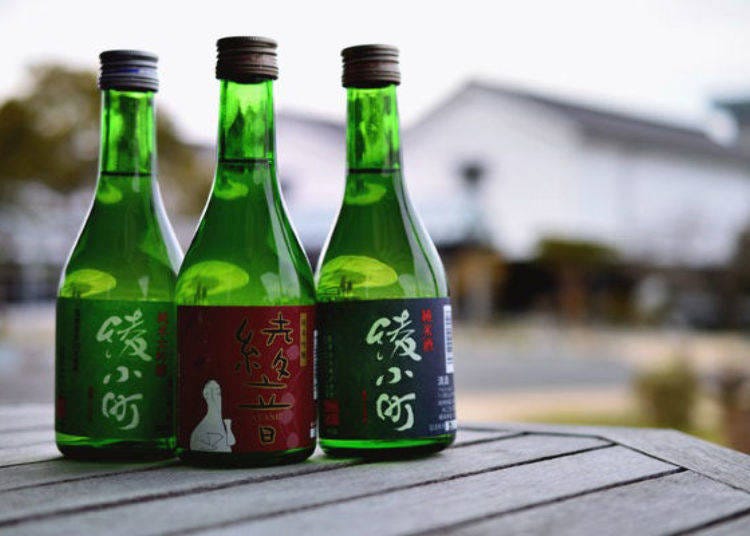
Next is Japanese sake from Wakamiya Shuzo, which also happens to be near Ayabe Gunze Square. The brand Aya Komachi seems to be fashioned based on a beautiful woman with a weaving machine, from when Ayabe prospered as a silk-producing city. The easy to carry 300mL size is recommended as a souvenir. The most popular items are as seen in the photo, from the left: Junmai Daiginjo (¥712), Ayane (¥712), Junmaishu (¥518). *Prices include tax.
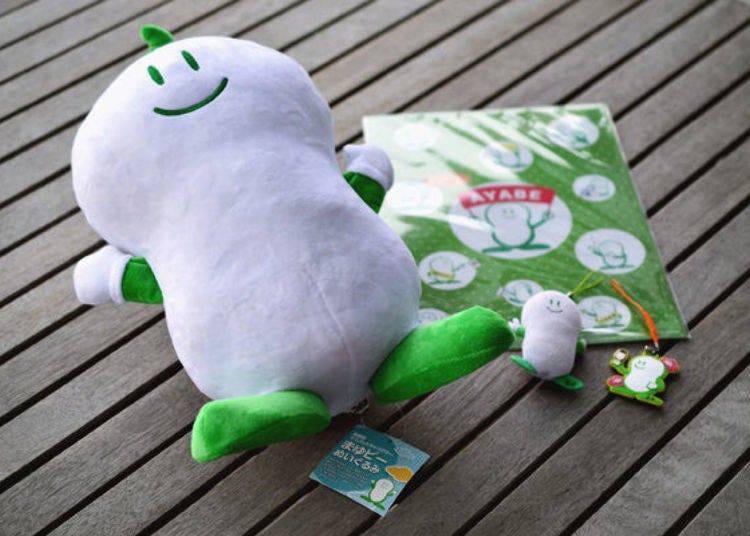
Lastly is Ayabe City's 'yuru-kyara,' or mascot character, Mayupi, an adorable silkworm cocoon that has become a theme here. From the left, plush doll (¥2,160), clear file (¥216), plush phone strap (¥594), rubber phone strap (¥378). These make great souvenirs for kids! *Prices include tax.
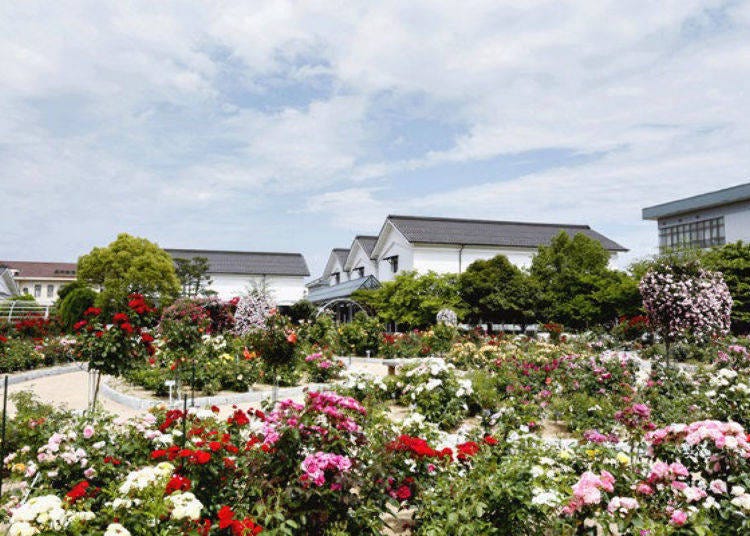
There is also the Ayabe Rose Garden in front of the Tokubutsukan. It is organized, managed, and maintained by over 500 volunteer citizens. There are about 1,200 roses in about 120 varieties. *Best time to view is mid-May to mid-June, and the latter part of October.
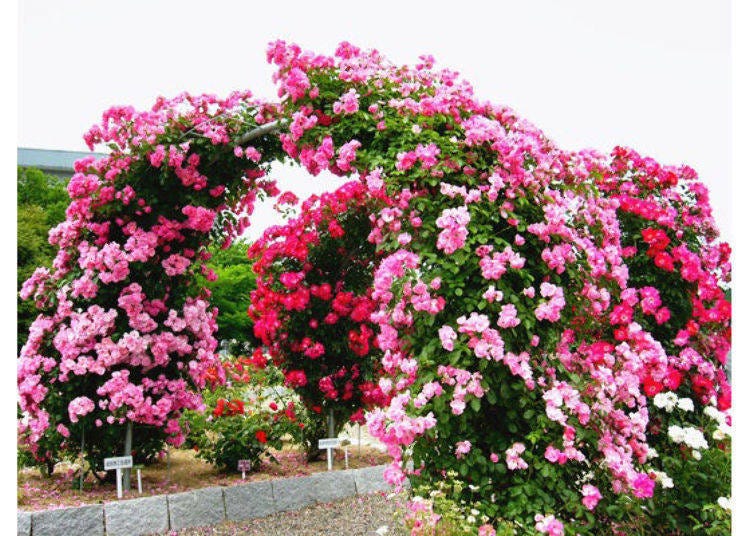
-
Ayabe Tokubutsukanあやべ特産館
- Address 1-2 Kamenashi, Aono-cho, Ayabe-shi, Kyoto-fu
- Phone Number 0773-43-0811
Hours: 9AM~5PM
Closed: Tuesdays (in case of national holiday, following day will be closed)
*Direct any inquiries regarding the Rose Garden to Ayabe Tokubutsukan
Ayabe Gunze Square is filled with plenty of interesting little places and things, including delicious teas and sweets, a historical center showing the precious history of Gunze, and a beautiful rose garden. If you happen to find yourself driving through the Kyotango area, by all means, please try to drop by.
Text by:Myogaya Nobuhisa
- Area
- Category
*Prices and options mentioned are subject to change.
*Unless stated otherwise, all prices include tax.
Popular Tours & Activitiess
Recommended places for you
-

Kambei Sannomiyahonten
Yakiniku
Kobe, Sannomiya, Kitano
-
Goods

Yoshida Gennojo-Roho Kyoto Buddhist Altars
Gift Shops
Nijo Castle, Kyoto Imperial Palace
-

Kanzenkoshitsuyakinikutabehodai Gyugyu Paradise Sannomiya
Yakiniku
Kobe, Sannomiya, Kitano
-

Jukuseiniku-to Namamottsuarera Nikubaru Italian Nikutaria Sannomiya
Izakaya
Kobe, Sannomiya, Kitano
-
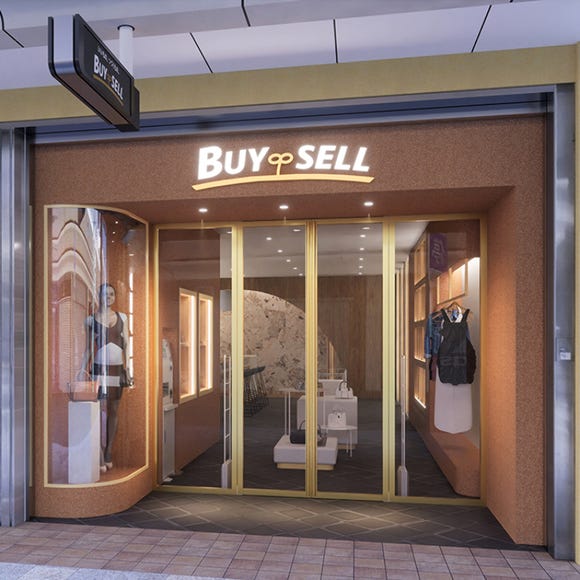
BUYSELL Kyoto Shijo-dori store
Clothing Stores
Gion, Kawaramachi, Kiyomizu-dera Temple
-

ISHIDAYA Hanare
Yakiniku
Kobe, Sannomiya, Kitano
-

Best Things to Do and See Around Kyoto & Osaka in September: Events and Festivals in Kansai
-
Ad

Café Bahnhof in Osaka: The home-roasted coffee that captivated G20 leaders!
-
Ad

Discover Timeless Beauty: Kimono-en, a Web Magazine Exploring the Spirit of Kimono
-

Everything You Need to Know About teamLab Biovortex Kyoto (2025 Insider Guide)
by: Wemmy Chau
-

Kyoto's Hidden Treasures Open This Winter! Enjoy Exclusive Access to 15 Rare Cultural Sites (Jan-Mar 2026)
by: Guest Contributor
-
Ad

Experiencing Manga as Culture, Not Just Reading It: Expo 2025 with Rumiko Takahashi
Inspiration for Accommodations
-

Spacious Family Hotel in Namba: 20 Comfortable Stays for Family Fun
-

Charming Hotels to Enjoy the Spectacular Views of Arashiyama's Autumn Leaves from Your Room
-

Experience Stunning Views of Osaka Castle from Private Spaces: Top Hotels Near Osaka Castle
-

Recommended by Visitors! Arashiyama's Best-Rated Hotels
-

Family-Friendly Universal Studios Japan Hotel with Excellent Access
-

Enjoy a Comfortable Stay in Osaka! 10 Hotels with Convenient Airport Shuttle Services
-

Top 10 Recommended Hotels Near Namba Station with Great Access
-

Enjoy Night Views from Your Room! Recommended Hotels in Namba Area
-

Sightseeing Highlights: Experience the Appeal of Kyoto Geisha Culture
-

5 Best Hotels Near Universal Studios Japan (Osaka): Top-Rated Places to Stay
by: WESTPLAN
-

10 Important Japanese Phrases to Know Before You Enter a Japanese Convenience Store!
by: Teni Wada
-

Inside Kobe Tower: Fun Things to Do at the Symbol of Kobe
-

Dining in Kyoto: Best Restaurants for Kaiseki, Sushi, Cafes & More
-

Kiyomizu-dera Temple: Guide to Visiting Kyoto's Most Famous Sightseeing Spot
- #best gourmet Osaka
- #things to do Osaka
- #what to do in kyoto
- #what to bring to japan
- #best gourmet Kyoto
- #new years in Osaka
- #what to buy in nanba
- #Visiting Osaka
- #onsen tattoo friendly arima
- #daiso
- #Visiting Kyoto
- #best japanese soft drinks
- #japanese fashion culture
- #japanese convenience store snacks
- #japanese nail trends












